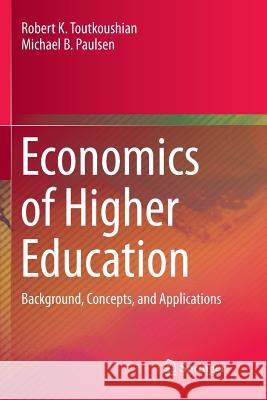Economics of Higher Education: Background, Concepts, and Applications » książka
topmenu
Economics of Higher Education: Background, Concepts, and Applications
ISBN-13: 9789402413649 / Angielski / Miękka / 2018 / 390 str.
Kategorie:
Kategorie BISAC:
Wydawca:
Springer
Język:
Angielski
ISBN-13:
9789402413649
Rok wydania:
2018
Wydanie:
Softcover Repri
Ilość stron:
390
Waga:
0.56 kg
Wymiary:
23.39 x 15.6 x 2.11
Oprawa:
Miękka
Wolumenów:
01
Dodatkowe informacje:
Wydanie ilustrowane











